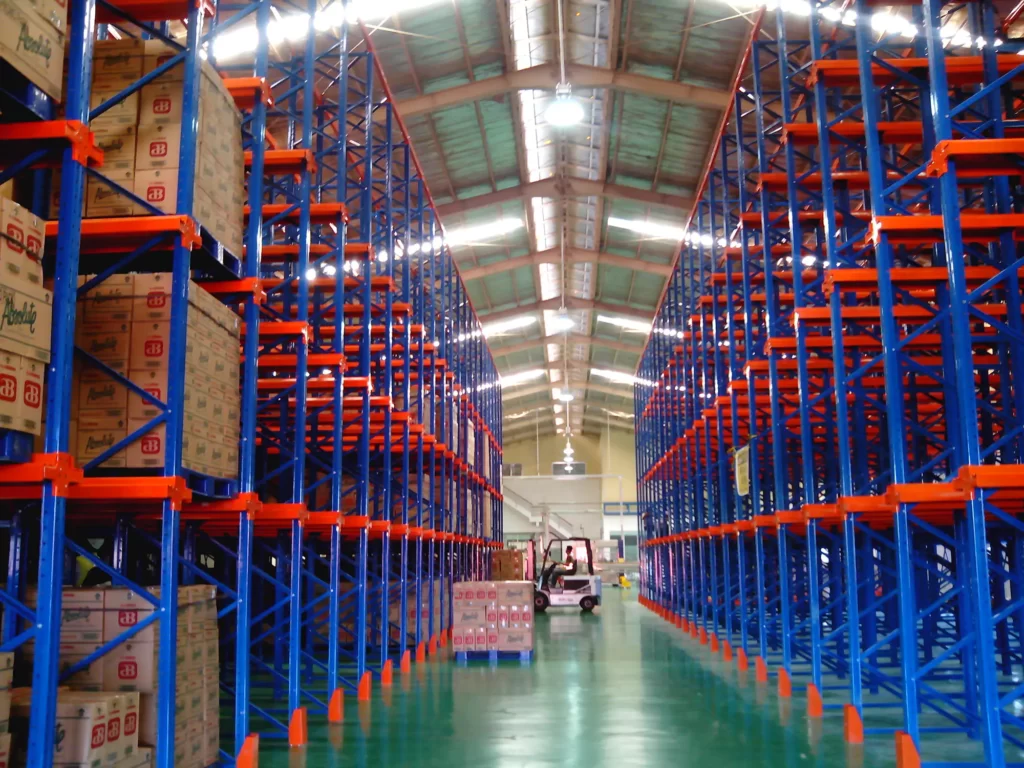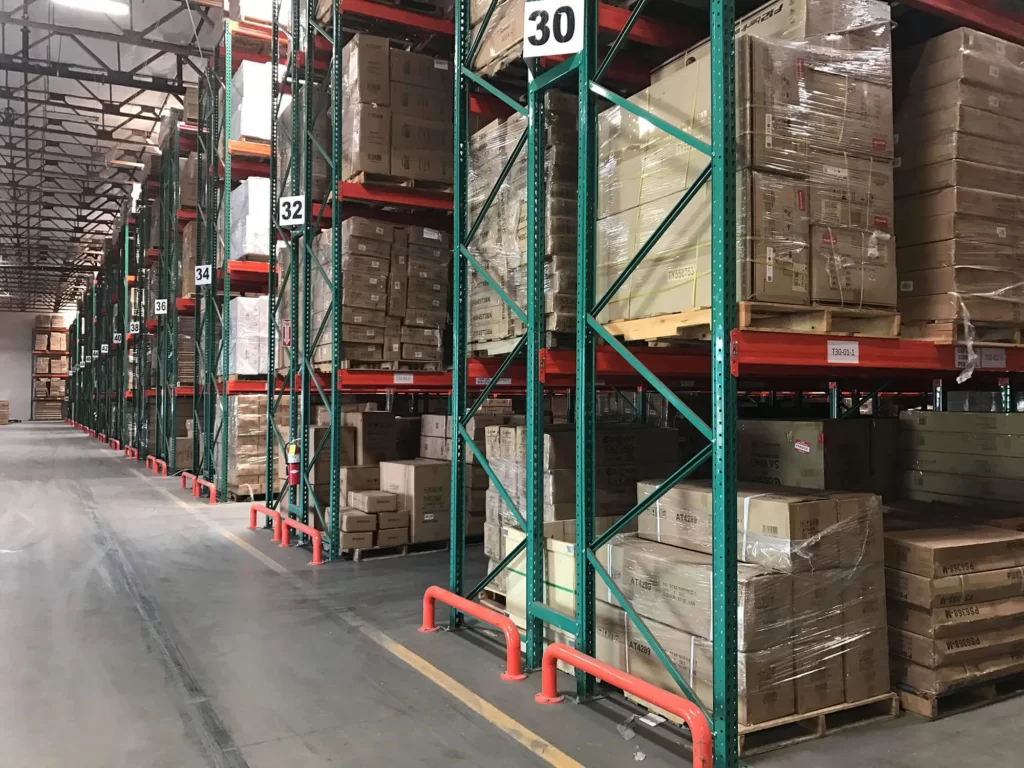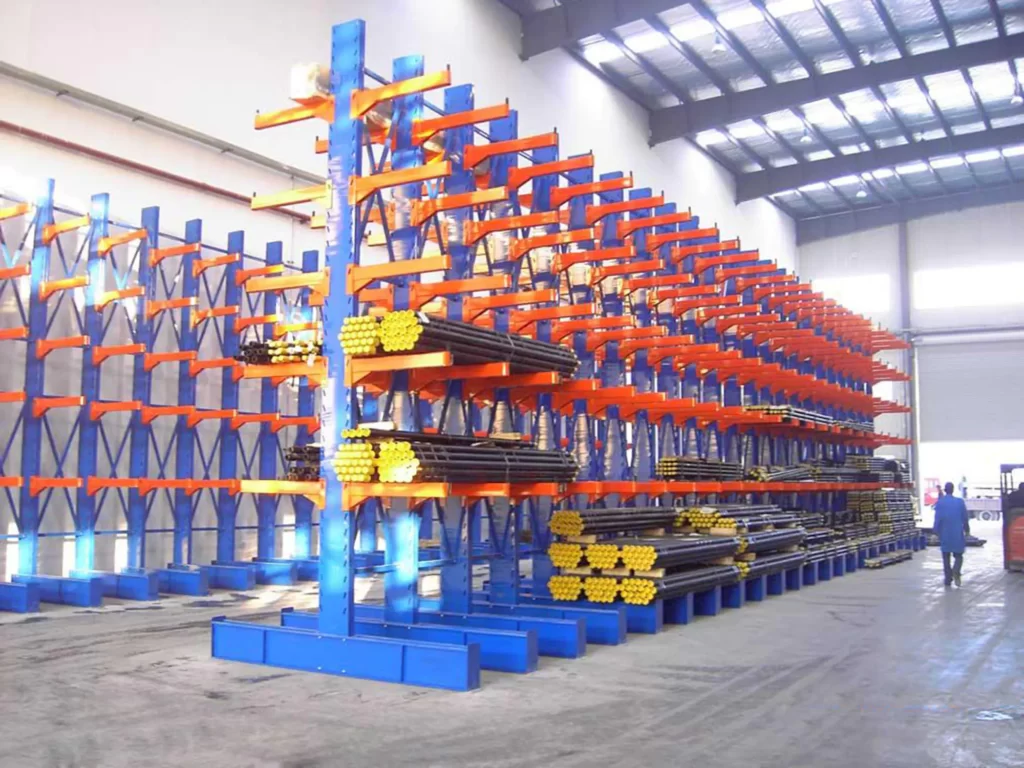Maintaining the oil’s purity and effectiveness, as well as guaranteeing the safety of workers and the environment, depends on how the drums are stored. Proper oil drum storage is essential knowledge for many business owners, especially those who deal in or use oil, warehouse managers, or do-it-yourselfers.
In this article, we will cover everything you need to know to safely and securely store oil drums, from the ideal containers to use to the finest methods of handling and storing oil drums.

Tips on How to Store Oil Drums
Below are some workable tips on how to store oil drums in a warehouse. We will start with the basics—that is, what kind of environment should be created for the safe storage of oil drums.
Environment Management
It is also crucial to keep the storage area cold and dry so that condensation inside the drums does not lead to rust or corrosion. Lubricants can degrade more rapidly under high temperatures, decreasing their efficiency and useful life. Having an air-conditioned room maintained at a constant temperature of roughly 70 degrees Fahrenheit is ideal for the storage area.
Maintaining a consistent temperature inside the drums would protect the lubricants from degradation caused by temperature swings.
Level and Oil-Resistant Flooring
The oil storage area’s floor must be flat and resistant to oil. Because oil drums are heavy, the floor must be smooth and level to prevent them from toppling over. The floor must also be sturdy enough to prevent oil drums from cracking or shattering under their weight. Note that oil can quickly seep through cracks or porous surfaces, contaminating the environment and posing possible health dangers to humans. This is why oil-resistant flooring is vital. Oil-resistant floorings, such as concrete or a specific coating, keep oil from seeping into the floor and make it much simpler to clean up any accidents that may occur.
Selective Pallet Racking
It is strongly suggested that selective pallet racks be used while storing oil drums. Selective pallet racking is advantageous because it enables users to choose any pallet load from the racking system without rearranging the other pallets. Selective pallet racking is the most common type of pallet racking used for storing oil barrels, and for a good reason.
The main benefit of selective pallet racking is that it lets people grab any pallet load they choose without having to rearrange the rest of the pallets. This helps to maximize the storage space of the warehouse and makes it simple to locate individual oil drums. Additionally, flexible and adaptable, selective pallet racks can be tailored to the oil storage facility’s unique requirements. Racks can be customized in terms of height, depth, and beam length, and shelves can be moved to suit oil drums of varying diameters.
In addition, oil drums are perfectly suited for selective pallet racking because it is built to last and can support substantial weight. The racks’ sturdy construction and high-quality steel construction bode well for the security of the oil products they hold. Selective pallet racking also facilitates better stock counting and management. Oil barrels can be stored neatly on pallets within the racking system, making it simple to count and track stock. This can reduce the likelihood of inefficient and costly over- or under-stocking.

Strong Shelving
It is necessary to set up shelving that can withstand the weight of the oil barrels. The containers stored on the shelves must be protected from damage of any kind to prevent spoilage. The oil barrels need to fill the available width of the shelves, and a separator must be placed between each one for security reasons. When not in use, oil drums should be laid on their sides rather than stacked. Drums should be stored on their sides to prevent spillage and other accidents.
Water Protection
No plumbing, including drains and sewers, should be used to house oil. This is because the land, water, and environment in the area are extremely vulnerable to contamination from any oil drum leaks or spills. Connecting the storage facility to a drainage system increases the likelihood of oil leakage and subsequent environmental damage. Because of this, it is essential to check the oil storage facility’s construction to make sure there will be no spills or leaks.
Barriers built around the storage area and a drainage system designed to catch any oil that does spill are two ways to achieve this goal. Moreover, you must be prepared to deal with any leaks or spills that may arise. This involves making sure you have the means to swiftly and effectively clean up any spills that may occur.
Information Visibility
Retail outlets selling motor oil are responsible for making their products’ labels clear and legible. This can be accomplished by storing the oil drums so that the labels face outward and stand upright. It’s also crucial that nothing in the storage space obscures the labels.
It is also a good idea to check the labels sometimes to make sure they are still legible and haven’t been damaged or faded by the elements. Errors can be avoided by promptly replacing any labels that have become unreadable. Accurate labeling can also aid in meeting mandatory safety regulations, and meeting industry benchmarks. Some regulatory authorities have strict requirements for product labels that must be followed, or else penalties will be levied.
Warning System
Having the right signs up is crucial to ensuring everyone at the plant is safe. Signs stating “No Smoking” and “Risk of Slippery Surface” should be prominently displayed by oil storage facilities to guarantee the safety of all employees working in or near the facility.
The presence of oil and other flammable materials necessitates the posting of “No Smoking” signs. Large amounts of damage can be caused by even a little fire or explosion in an area where oil is present. Such warning signs should be easily noticeable in oil storage areas to prevent the spread of fires and explosions caused by combustible materials.
Oil storage tanks are particularly prone to slippery conditions due to leaks and spills. The health of adjacent workers is seriously endangered by the prevalence of slips and falls. Protecting personnel in oil storage facilities is as simple as posting warnings like “Risk of Slippery Surface” and asking them to take precautions like wearing non-slip shoes and moving gently.
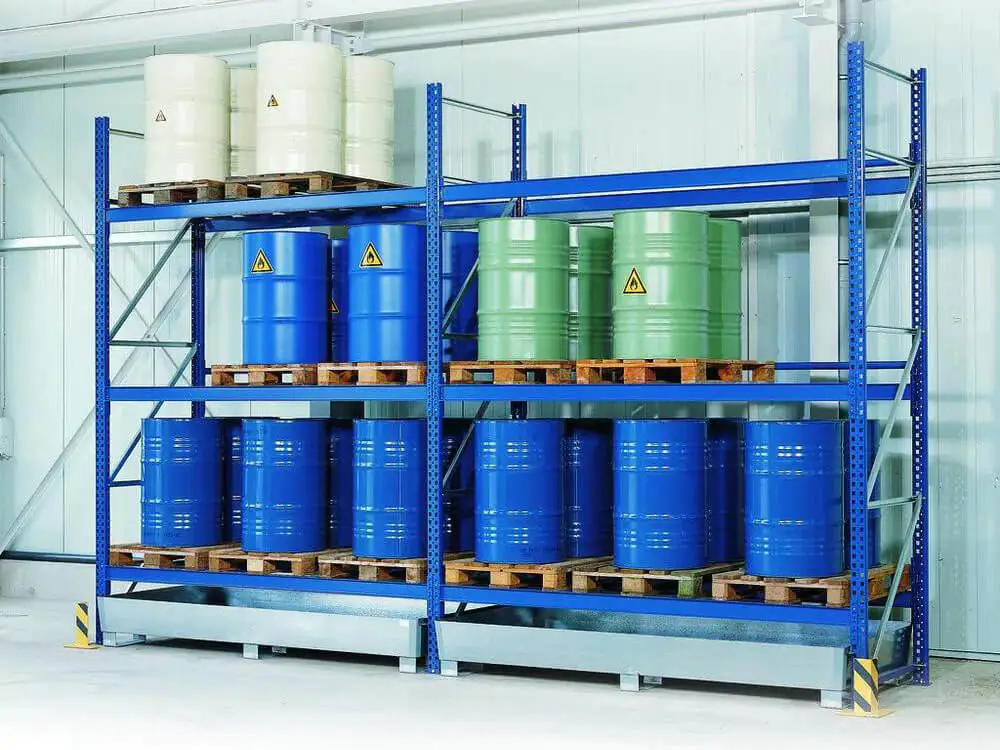
Preventing Unauthorized Access
Locks and other security measures are important to any oil storage facility’s defenses. Storage facility security measures may include fencing, gated entry with key or card entry, and locks on all doors and windows.
Theft and vandalism can be avoided if sufficient locks and other security measures are in place. In addition, only authorized personnel should be allowed entry to the storage area, and the timestamps of their visits should be recorded. Installing surveillance equipment and alerts allows you to monitor the storage facility and quickly spot any suspicious activity. In the event of a security breach, these resources can be used to notify authorities and compile evidence.
Safe Stacking
Oil drums must be stacked correctly to avoid leaks and spills. To avoid mishaps and destruction, you should stack them safely and securely. In addition, make sure your staff has received training on safe handling procedures to cut down on the number of incidents.
Oil drums can be stored horizontally, which is a common practice. Two beams support each drum as they are stacked horizontally on a rack. This keeps the drums from toppling over by distributing their weight equally. The convenience of this design extends to the removal and replacement of drums.

Oil drums can also be stored vertically, which is becoming increasingly common. Each drum is secured in a cradle or hook as the rack is positioned vertically. This is the best way to store drums with liquids in them, as the contents may be easily mixed if they settle or separate during storage.
Can You Store Oil Drums Outside?
Lubricants in oil barrels can breathe when exposed to different temperatures during outdoor storage. Because of this, the oil may oxidize and become less effective over time. The oil’s performance may also suffer if it becomes polluted due to exposure to moisture.
Take into account the following: A rain-soaked oil drum lid sits on an unprotected outdoor storage container. Because of the bungholes, water can seep into the drum and contaminate the oil as it sits on the lid. Rust and corrosion can form as a result, weakening the drum to the point where it breaks and the contents stream out.
Take care when storing oil drums outside to avoid these problems. The drums need to be protected from the elements. Therefore, the first step is to cover them. To prevent water from entering the bungholes, a simple tarp or cover can be utilized to protect the drums.
The storage place for the drums should be thought of as well. They should be positioned on a level, sturdy surface to avoid toppling over and should be maintained away from any sources of ignition like open flames or electrical equipment. Last but not least, keep an eye out for leaks and other damage by inspecting the drums frequently. A damaged drum needs to be taken out of service and disposed of properly.

Is Sunlight Bad for Oil Storage?
Sunlight can be bad for oil storage, as exposure to direct sunlight can lead to a number of issues that can compromise the quality and effectiveness of the stored oil. One of the main concerns with sunlight exposure is the potential for the oil to degrade or break down over time. This is because oil’s chemical composition can alter when exposed to sunlight, resulting in a loss of lubricating qualities and other important attributes. This can lead to diminished efficiency and even device failure.
Sunlight can degrade the oil itself, and it can also harm the oil container. As a result of prolonged exposure to sunlight, plastic containers can become brittle and shatter, causing hazardous leaks. Light from the sun can corrode and otherwise harm metal vessels left out in the open for too long.
Sunlight poses a risk of overheating the storage space, which is another issue to consider. Exposing oil containers to bright sunlight can cause the oil within to heat up quickly, hastening the breakdown process. As a result, the oil’s effectiveness and shelf life may suffer.
How Long Can Oil Drums Be Stored?
Different oils and greases have different expiration dates depending on factors like their composition, storage, and age when they were purchased. Oils and greases, when kept properly in their original containers, have a shelf life of several years.
Oil, unlike food, does not have a finite shelf life, after which it will inevitably “go bad” or “spoil.” Instead, the time after the oil may begin to decay or lose its efficacy is meant by the term “shelf life.” Many environmental conditions, such as air circulation, heat, and humidity, might contribute to this.
Oil barrels’ useful life can be greatly prolonged through careful storage. This means they need to be stored in a dark, cool environment with constant temperatures. Air and other pollutants hasten oil’s deterioration, so it’s important to maintain the barrels sealed and organized.
The manufacturer or an expert in the industry should be consulted regarding the expected lifespan of oil barrels. You can also learn from them how long your oil drums should last and the ideal place to keep your oil. Regular inspection of oil barrels for signs of degradation or contamination is recommended.
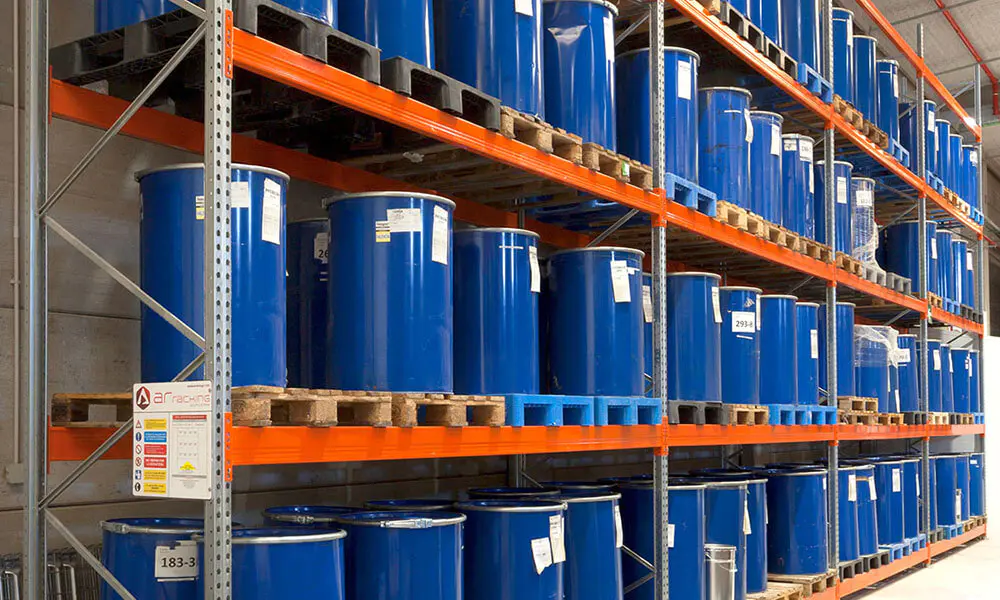
How to Store Oil Drums? Conclusion
Safe and secure oil barrel storage is critical for several reasons, including preventing spills, protecting workers and the environment, and preserving the oil’s purity and efficacy. Everything from temperature and humidity regulation to oil-resistant and level flooring to selective pallet racking to strong shelving to water protection to label visibility and warning warnings is covered in this piece. By following these guidelines, businesses, warehouse managers, and DIY enthusiasts can ensure the longevity and safety of their stored oil drums, as well as comply with safety regulations and industry standards. It is important to remember that any failure to store oil drums properly can have serious consequences, including contamination of the environment and potential hazards to human health.




